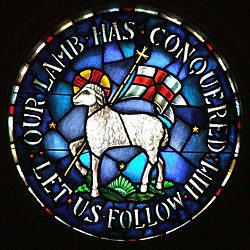Hello and welcome to my revamped blog. Thanks to the generosity of so many folk, I have been busy with talks and selling my book about ‘Elizabeth the feisty feminist.’ Hence, no blogs recently and a large donation to charity.
My change of direction will pick up on the themes of equality and Moravian history, alongside charities that significantly enhance the lives of girls and women. I will take a broader look at these topics, sometimes with a quirky approach, but staying in touch with the broad field of work undertaken by Elizabeth.
Elizabeth was an amazing Victorian feminist who dedicated her life to equality, education for girls and female emancipation. Many aspects of her life reflect the Moravian principles, not surprisingly as she spent two years at Fulneck School, Pudsey (near Leeds). The school was, and is, alongside the church at the heart of the Fulneck settlement on the outskirts of Leeds.
Having been taught by the Moravian approach to education, as developed by Jan Comenius, the grandfather of modern education, she went on to significantly influence education in this county. Not only was she a successful headmistress, she also improved standards of teaching nationally and earned the right for young girls to gain national qualifications. If you have dreaded such exams, you have Elizabeth to thank.
While at Fulneck she will also have witnessed the Moravian valuing of equality. For example, women in the settlement at that time made lace. Each month women went to London to sell these highly valued goods. It was Elizabeth’s ambition to be an independent woman who could support herself and here she saw a living example.
Elizabeth arrived at Fulneck in 1848, exactly 100 years since the building of the Fulneck Church was completed. Hence, she will have learned the long and fascinating history of the Moravian Church.
The Moravian church is one of the earliest Protestant churches, with a history that stretches back to Jan Hus who was burned at the stake in 1415. Today it is a worldwide church that has been instrumental in the development of education, healthcare and social life wherever faith communities have formed. The work in many diverse areas of life still continues across the globe. Worldwide there are over 65 languages spoken by members of the church, watch out in future blogs for a more accurate figure!
Across England and Northern Ireland there are four Moravian settlements, of which Fulneck is one. The settlement in Northern Ireland is at Gracehill. They have very recently been awarded UNESCO World Heritage status, a resounding tribute to the rich history of the Moravian Church.
Gracehill: ‘It’s special because it’s kept its authenticity’ – BBC News …. from this link you can take a look at an article with many photographs of the place and the people who have contributed to this wonderful achievement.

A view of Gracehill Moravian Church
Let me close by inviting you, if you can, to join us at our Fulneck Heritage Open Day on Saturday 14 September (starting at 10.30). With a title of ‘Here, there and everywhere’ we certainly have plenty of stories to choose from. Our focus is people who have come or gone from Fulneck and made a real contribution to the world.

From Heritage Day 2023: an illustration of the tradesmen that would have worked in the settlement when Elizabeth was at Fulneck school.
In addition to the exhibition, which will be in the Church, you can take a tour of the settlement and visit a vintage car exhibition. Being Moravian, refreshments and cake will be available all day so no need to go hungry. In my next post I will pick up on the exhibition and offer lots of photographs so you won’t miss out even if you can’t come; there will also be photos of the other settlements, all built between 1740 and 1785.
Wherever you are you can celebrate local heritage and history, just search Heritage Days and you will find a wealth of activities for all the family.
Please share this with others who may be interested and get in touch if you wish to book a talk.
I would also value your comments so please leave me a message.
Thanks, Mary


Recent Comments